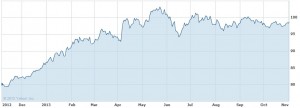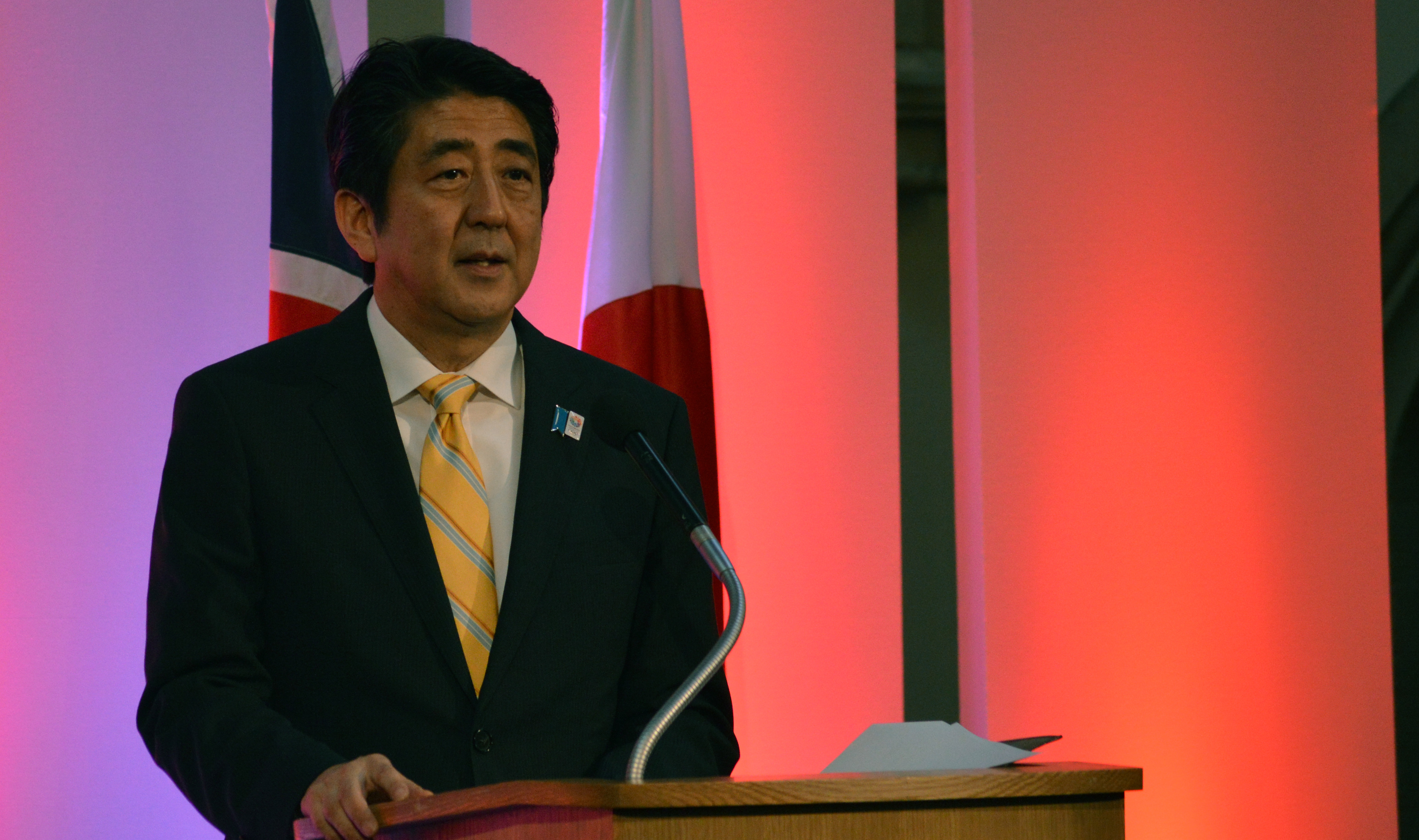Several months ago I wrote of nationalism in Shinzō Abe’s Japan. It is a nation that has seen such resurgent nationalism during Mr. Abe’s second stint as prime minister, coupled with some of the most vigorous monetary policy coming out of the Bank of Japan in years, as well as lively fiscal spending. Such loose and active policy from the Japanese government has been dubbed “Abenomics.” Now, one year since Abe regained his seat of power in the 2012 parliamentary elections, it would do well to examine his economic reforms as they stand today, in their successes and their failures.
Much depends on how one defines success. Perhaps the most explicitly stated goal of Abenomics is to end Japan’s years of crippling deflation. While core inflation at last lurched out of the negative range this past summer to 0.8 percent in August and 0.7 percent in September, Mr. Abe’s “virtuous circle” of rising, spiraling wages and employment is, in reality, nowhere to be seen. While consumer prices have risen and continue to rise, wages aren’t keeping pace. The great danger, at least for the Japanese worker, is that real wages will continue to stagnate.
Since Abe first proposed his policies a year ago, the Yen has fallen nearly 23 percent, from a November 5, 2012 close of 80.50 to this past Saturday’s of 98.72. Yet such a devaluing runs the risk of hurting the average Japanese consumer – and many claim it has. While the Nikkei has risen almost 60 percent since this time last year, a growth directly attributable to the confidence Mr. Abe’s pro-business plan has instilled in investors and the Bank of Japan’s quantitative easing, there is little evidence that Japanese firms aren’t retaining profits instead of spurring investment or wage increases.

There are two sticking points that are yet to be resolved when it comes to discussing Abenomics. The first is that the prime minister has yet to lay out a long-term vision for the Japan he is so energetically trying to revive. As in the United States, Japan’s government debt looms large, at 211% of its GDP. A sales tax pushed through by Abe this year in the hopes of tempering the blow of the massive Keynesian, fiscal stimulus that is the second arrow of Abe’s economic plan appears inherently contradictory. But Mr. Abe must offer something more than vague, long-term commitments and goals.
The third arrow, proactive structural reform, is yet to be seen. This includes immigration, labor, and trade reform. No doubt, much of these reforms are tied to the success of the lumbering Trans-Pacific Partnership negotiations. It will be fascinating to see how structural reforms in Japan take shape as these negotiations reach the year-end deadline set by President Obama.
Thus far, Shinzō Abe’s brand of nationalist conservatism has been, quite paradoxically, represented in his loose economic policy. In Tokyo, the stock market booms and industrial production growth nears five percent. The average Japanese, however, has to contend with flat or falling wages and higher consumer prices. Of course, in a sluggish Japan, Abe has been expected to push forward, regardless of the negative consequences of Abenomics. There is a price to pay, naturally, for attempting to lead a nation out of economic torpor. The question that will need to be answered as Shinzō Abe’s plan surges forward, however, is: what is this price?
